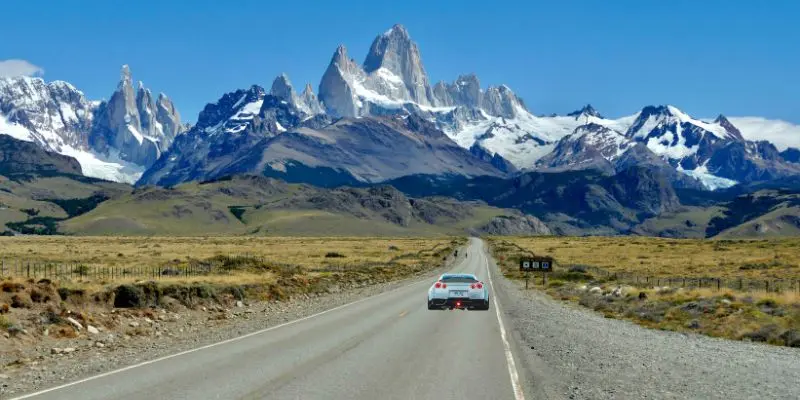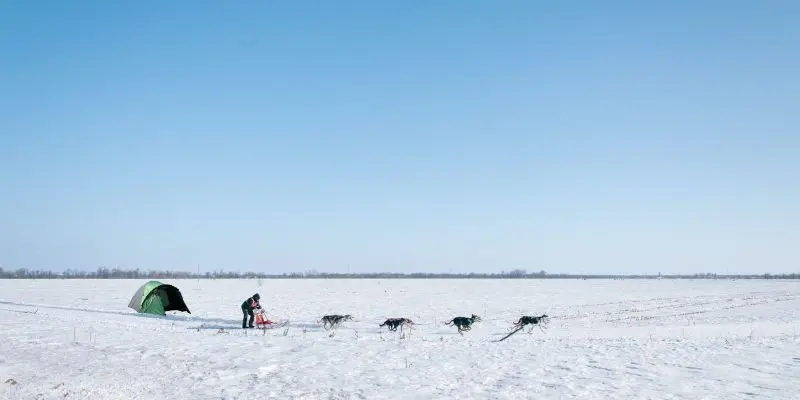10 Unexplored Remote Wilderness Areas: A Guide to Untouched Natural Beauty
Updated: 25 Nov 2023
330
Before we delve into the enchanting world of remote wilderness areas, let’s define what sets them apart. Remote wilderness areas are characterized by their isolation from urban development and human influence. These regions are often untouched by modern infrastructure and offer a glimpse into the pristine and unspoiled beauty of our planet.
They provide an escape from the noise and pollution of cities, allowing you to reconnect with nature in its purest form. For more information and valuable tips on exploring remote wilderness areas, where we provide extensive resources and guidance to help you make the most of your outdoor adventures.
The Attraction of Remote Wilderness Areas
The attraction of remote wilderness areas lies in their untouched landscapes and the sense of adventure they evoke. Here are some reasons why exploring these areas should be on every camper’s bucket list

1- Natural Beauty
Remote wilderness areas are a treasure trove of breathtaking natural beauty. From Rocky Mountains and dense forests to crystal-clear lakes and twisting rivers, these places showcase the best that Mother Nature has to offer.
2- Solitude
If you’re seeking solitude and a break from the crowds, remote wilderness areas are the perfect choice. You can truly disconnect from the digital world and find peace in the tranquil surroundings.
3- Wildlife Encounters
These areas are often home to a diverse range of wildlife species. Whether you’re an avid birdwatcher or hoping to spot larger mammals, you’ll have a chance to witness the wonders of the animal kingdom up close.
4- Adventure Opportunities
From hiking and camping to kayaking and fishing, remote wilderness areas offer a plethora of outdoor activities for adventure enthusiasts. There’s no shortage of opportunities to explore, challenge yourself, and create lasting memories.
5- Discover Night Sky
If you want to see a lot of stars, go to a place far away from city lights. On a clear night, you can see many stars, planets, and other cool things in the sky.
The Importance of Preserving Remote Wilderness Areas
Preserving remote wilderness areas is not only essential for our well-being but also crucial for the health of our planet. These untouched landscapes serve as vital ecosystems, supporting a wide variety of flora and fauna. They act as carbon sinks, helping mitigate climate change, and provide us with clean air and water.
Furthermore, these areas offer researchers valuable insights into the natural world, aiding in the conservation of endangered species and the development of sustainable environmental practices. By protecting these remote wilderness areas, we ensure that future generations can continue to benefit from their beauty and ecological significance.
Exploring Remote Wilderness Areas
Now that we understand the importance of these remote wilderness areas let’s embark on a virtual journey to some of the most breathtaking and secluded locations on Earth
1- Patagonia, Chile and Argentina
Nestled at the southern tip of South America, Patagonia is a land of rugged beauty. With its towering glaciers, jagged peaks, and crystal-clear lakes, this remote wilderness area is a haven for hikers, climbers, and nature lovers.
2– Canadian Arctic
For those seeking the ultimate Arctic adventure, the Canadian Arctic offers vast expanses of ice, polar bears, and the mesmerizing Northern Lights. It’s a remote wilderness area that promises unforgettable experiences.

3- Namib Desert, Namibia
The Namib Desert, one of the world’s oldest deserts, boasts towering red dunes, starry night skies, and unique desert-adapted wildlife. It’s a remote wilderness area that allows you to connect with the stark beauty of the desert.
4- Fiordland National Park, New Zealand
Located on the South Island of New Zealand, Fiordland National Park is a land of dramatic fjords, lush rainforests, and serene lakes. It’s a remote wilderness area that invites you to explore its untouched landscapes by hiking, kayaking, or simply taking in the views.
5- Tongass National Forest, Alaska
The Tongass National Forest is the largest national forest in the United States, offering pristine wilderness, abundant wildlife, and breathtaking glaciers. It’s a remote wilderness area that showcases the rugged beauty of Alaska.
6- Iceland’s Highlands
Iceland’s Highlands are a remote wilderness area dotted with geothermal hot springs, volcanic landscapes, and dramatic waterfalls. It’s a place where you can immerse yourself in the raw power of nature.
7- Galápagos Islands, Ecuador
The Galápagos Islands are a remote wilderness area that inspired Charles Darwin’s theory of evolution. With unique wildlife found nowhere else on Earth, these islands are a paradise for nature enthusiasts and wildlife lovers.
Tips for Camping in Remote Wilderness Areas
If you’re inspired to explore these remote wilderness areas, it’s essential to plan your adventure carefully. Here are some tips to help you get started
1- Research and Preparation
Begin by researching your chosen destination thoroughly. Understand the climate, terrain, and wildlife you might encounter. Make a checklist of essential gear and supplies.
2- Safety First
Safety should be your top priority. Inform someone about your travel plans, carry essential safety equipment, and be prepared for unexpected challenges.
3- Leave No Trace
Practice responsible tourism by leaving no trace of your visit. Follow Leave No Trace principles to minimize your impact on the environment.
4- Local Regulations
Be aware of and respect local regulations and permits required for your chosen destination. Some areas may have restrictions to protect the fragile ecosystem.
5- Guided Tours
Consider joining a guided tour or hiring a local guide, especially if you are unfamiliar with the area. Experienced guides can enhance your experience and ensure your safety.
6- Wildlife Interaction
Keep a safe distance from wildlife and refrain from feeding or approaching animals. Observe wildlife from a distance to minimize disturbance.
7- Minimalistic Approach
Embrace a minimalistic approach to camping and traveling in remote wilderness areas. Carry only what you need and minimize waste.
In the words of the ancient proverb, “Into the wild, we go, to lose our minds and find our souls.”
It’s an opportunity to disconnect from the chaos of everyday life and reconnect with the natural world, ultimately discovering a deeper sense of self and serenity.
Pros and Cons Remote Wilderness Areas
| Pros |
|---|
|
| Cons |
|---|
|
FAQs
What is the meaning of wilderness area?
A wilderness area is a large, unpopulated tract of land that has been protected from human development and motorized activity.
Is wilderness a desert?
Yes, wilderness can be a desert, but it can also be any other type of natural land that is not populated or developed by humans.
What is the difference between wild and wilderness?
“Wild” refers to an untamed or uncontrolled state, while “wilderness” refers to a large area of land that is untouched by human civilization.
Is wilderness the same as forest?
No, wilderness is not the same as a forest. Forests are a type of wilderness, but not all wilderness is a forest.
Conclusion
Remote wilderness areas offer a unique opportunity to disconnect from the modern world and reconnect with nature in its purest form. These untouched landscapes are not only essential for our well-being but also play a vital role in preserving our planet’s biodiversity and natural balance.
As you plan your adventure to remote wilderness areas, remember to tread lightly, respect the environment, and leave behind nothing but footprints. By doing so, you’ll not only have an unforgettable experience but also contribute to the conservation of these nature’s hidden gems. So, pack your bags, embark on the journey, and let the remote wilderness areas captivate your soul.
Please Write Your Comments